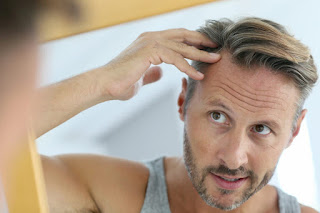How Fractional CO2 Lasers Promote Healing at the Cellular Level
Fractional CO2 lasers are increasingly recognized for their efficacy in skin rejuvenation, offering solutions for a variety of skin concerns, including wrinkles, scars, and uneven texture. A key aspect of their effectiveness lies in how fractional CO2 lasers promote healing at the cellular level. This advanced technology utilizes a specific laser wavelength to penetrate the skin, stimulating the body’s natural healing processes and encouraging cellular regeneration. Understanding this mechanism can provide insight into the transformative effects of Fractional CO2 Laser Treatment in Dubai
The Mechanism of Fractional CO2 Lasers
Fractional CO2 lasers operate by emitting concentrated beams of light that create micro-injuries in targeted areas of the skin. This process, known as fractional photothermolysis, allows the laser to treat a fraction of the skin's surface while preserving the surrounding tissue. By doing so, fractional CO2 lasers minimize downtime and promote faster recovery, making them an attractive option for those seeking effective skin treatments.
The controlled thermal damage inflicted by the laser triggers the body's natural wound-healing response. This response initiates a series of biological processes aimed at repairing and regenerating the affected tissues. The thermal energy stimulates the production of collagen and elastin, two crucial proteins that contribute to skin firmness and elasticity.
Cellular Response to Fractional CO2 Laser Treatment
1. Activation of Fibroblasts
One of the primary cellular responses to fractional CO2 laser treatment is the activation of fibroblasts. These specialized cells are responsible for synthesizing collagen and elastin, which form the structural foundation of the skin. When the laser creates micro-injuries, fibroblasts are stimulated to migrate to the treatment site and initiate the healing process. This increase in fibroblast activity leads to enhanced collagen production, resulting in firmer, more resilient skin over time.
2. Inflammatory Response
The immediate aftermath of fractional CO2 laser treatment involves a controlled inflammatory response. While inflammation is often viewed negatively, it plays a crucial role in healing. The process begins with the release of growth factors and cytokines, signaling molecules that attract immune cells to the injured area. These immune cells work to clear away damaged tissue and facilitate the healing process.
3. Tissue Remodeling
As the healing progresses, the skin undergoes a remodeling phase. During this time, newly formed collagen fibers are reorganized and strengthened, which improves the skin's overall texture and appearance. This remodeling phase can take several weeks to months, but the results are well worth the wait, as the skin becomes noticeably smoother and more youthful.
The Role of Heat in Healing
1. Thermal Energy Transfer
The heat generated by fractional CO2 lasers is critical to the healing process. As the laser penetrates the skin, it transfers thermal energy that induces controlled damage. This thermal energy not only stimulates fibroblasts but also promotes increased blood flow to the treated area. Enhanced circulation brings vital nutrients and oxygen necessary for effective healing, further accelerating the regeneration of skin cells.
2. Collagen Denaturation and Reformation
The heat from the laser also causes a phenomenon known as collagen denaturation. This process temporarily alters the structure of existing collagen fibers, making them more pliable. As the body repairs itself, new collagen is laid down in a more organized and structured manner. This results in firmer, smoother skin with improved elasticity.
Benefits of Enhanced Cellular Healing
The cellular healing promoted by fractional CO2 lasers leads to numerous benefits beyond mere aesthetic improvements.
1. Reduction in Scarring
For individuals with scars from acne, injuries, or surgeries, fractional CO2 lasers can significantly improve skin texture. The increased collagen production helps to fill in and smooth out these scars, resulting in a more even appearance.
2. Improvement of Skin Tone
The stimulation of collagen and elastin also contributes to a more uniform skin tone. As the skin heals, discoloration and hyperpigmentation can fade, leading to a brighter, more radiant complexion.
3. Long-Lasting Results
Unlike some superficial treatments, fractional CO2 laser treatments offer long-lasting results due to the deep, structural changes that occur at the cellular level. Patients often enjoy improvements for several months or even years after completing their treatment sessions, making it a worthwhile investment in skincare.
Post-Treatment Care for Optimal Healing
While fractional CO2 lasers effectively promote healing at the cellular level, proper post-treatment care is essential for maximizing results. Following treatment, patients are typically advised to:
- Keep the area clean and moisturized: Using gentle cleansers and hydrating ointments can help support the healing process.
- Avoid sun exposure: The skin is especially sensitive after treatment, so protecting it from UV rays is crucial to prevent complications and ensure optimal healing.
- Follow dermatologist recommendations: Adhering to the specific aftercare instructions provided by a healthcare professional can greatly influence the effectiveness of the treatment.
Conclusion
Fractional CO2 lasers offer a powerful method for promoting healing at the cellular level, transforming the way skin concerns are addressed. By stimulating fibroblast activity, initiating an inflammatory response, and enhancing tissue remodeling, these treatments effectively rejuvenate the skin. Understanding how fractional CO2 lasers work at this fundamental level helps patients appreciate the complexity and effectiveness of the procedure. For anyone considering skin rejuvenation, consulting with a qualified dermatologist can provide invaluable insights and guidance tailored to individual needs. With the right approach, fractional CO2 laser treatments can lead to healthier, more vibrant skin, fostering confidence and well-being.



Comments
Post a Comment